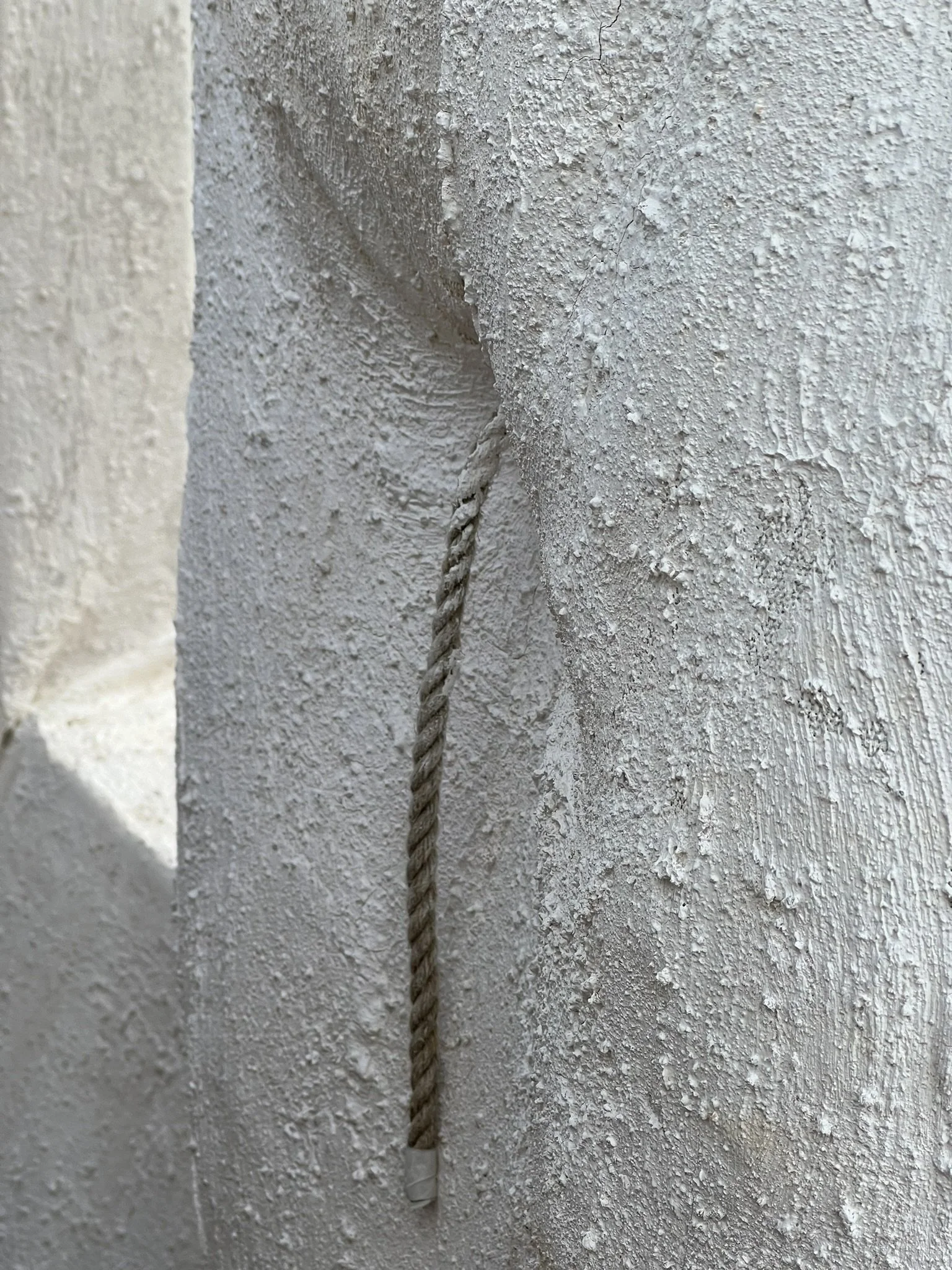fat house
Fat House / Deployable Hemp-Based Wall System
Princeton School of Architecture / Design Seminar: Embodied Carbon / Spring 2024 / Collaborators Tamara Birghoffer and Olivia Ahmadi / Mentor: Paul Lewis
Testing the limits of a single biogenic material – industrial hemp – this novel assembly technique incorporates an expandable frame, a repetitive series of bolted connections, and hemp-based rope, fabric, and insulation. As such, the wall surface rejects the thin, clean, linearity of off-the-shelf materials, proposing a thick and uniquely moldable “fat” wall system.
The frame is first assembled with a diagonal grid of dimensional lumber. Attaching 1.5”x1.5” strips at each interstice by eye bolts and nuts, the frame can be flat-packed, expanded, and erected on site. Hemp rope connected to the eye bolts and nuts is used to suspect grommeted, pre-stitched fabric as a kind of “biogenic thermal break.” The rope can be lengthened or shortened, and the clamp tightened or loosened as the construction worker or occupant sees fit. After the connections are adjusted to suit the desired “fatness” of the wall, the bag is infilled around the structure with the hemp-lime, which is poked, prodded, and tamped into place. As the insulation cures, the rope assembly still allows for more subtle, fine-grained adjustments. Performing as formwork for the insulation, water barrier for the elements, and adherent substrate for the exterior-grade lime plaster, the waterproofed hemp canvas proves the polyvalent potential of a single biogenic material. As the hemp-lime insulation hardens, the expandable structure becomes rigid, as does the canvas surface itself, and the final plaster can be applied.
A proposed two-story residential structure using the assembly incorporates the expandable frame into both the walls and roof of the structure, exploring options for curvilinear forms and greater customization to suit the programming. Carbon calculations based on the specifications of the full-scale structure showed a final embodied carbon of 3.5 kgCO2eq/m2.
















